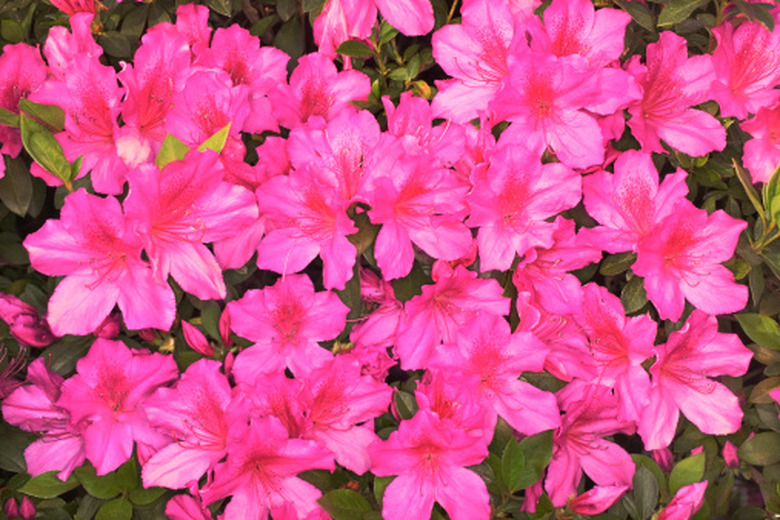How To Treat Rust On Azalea Plants
Things Needed
- White facial tissue (optional)
- Tarp
- Gardening gloves
- Pruning shears
- Bleach solution
- Garbage bag
- Rake
- Fungicide
Tip
Rust symptoms first appear on azaleas in midsummer. If infected foliage is left wet overnight, the spores in the pustules spread to other parts of the plant, or to new plants altogether by air currents or splashing water, thus increasing infection. Varieties of azaleas that are resistant to rust include "Red Letter" and "Balzac." Adopt proper cultural practices to keep the disease from developing on your azaleas in the first place. Grow the plants in well-draining soil, space multiple plants sufficiently apart to provide good air-circulation and irrigate the plants in the morning so the foliage is dry by evening.
Belonging to the Rhododendron genus, azaleas are perennial bushes prized for their showy blooms that appear during spring. When cared for properly, the landscape plants liven up the garden for many years. However, azaleas are susceptible to a variety of fungal diseases including leaf spot and rust. Varieties of deciduous azaleas, including plumleaf azalea, pinxterbloom azalea and swamp azalea, are more susceptible to leaf rust than other varieties. Adopt an organic or chemical control option to treat rust on azaleas.
Step 1
Identify symptoms of the disease on the azalea to make sure the infection is present. Avoid treating the azalea for rust without making sure it is infected. Look for tiny, round, yellow spots on the upper surfaces of leaves, and orange colored pustules on the undersides. Run a finger or a white facial tissue over the upper surface of a leaf for orange-yellow colored stain that confirms the presence of the disease.
Step 2
Spread a tarp under the azalea to collect clippings before you begin pruning. Avoid leaving clippings or plant debris around the azalea, as the spores overwinter in the material to re-emerge again during the summer.
Step 3
Wear gardening gloves and pluck off the leaves if the infection is small. Prune heavily infested parts of the plant with sharp, sterilized pruning shears. Dip the blades in a solution of bleach and water before pruning infected stems down to healthy buds. Disinfecting the blades keeps the spores from spreading to other parts. Walk around the plant to prune all heavily infected stems.
Step 4
Collect clippings in the tarp and add to a garbage bag. Rake up leaves and mulch under the azalea plant and add to the tarp, as they may contain fungal spores. Knot the garbage bag firmly before disposing. Do not add these to the compost pile.
Step 5
Spray the azalea bush with a fungicide containing sulfur, manxozeb or Bordeaux. Read label directions beforehand so you know how much water to add to the concentrate, if necessary. Walk around the plant to cover it completely in the fungicide. Use the fungicide as a means of preventing spread to new foliage.
